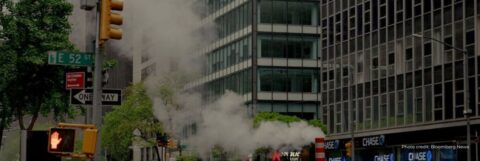Wall Street Journal
Oct. 2, 2023
Peter Grant
First, the good news for office landlords: A post-Labor Day bump nudged return-to-office rates in mid-September to their highest level since the onset of the pandemic.
Now the bad: Office attendance in big cities is still barely half of what it was in 2019, and company get-tough measures are proving largely ineffective at boosting that rate much higher.
Indeed, a number of forces—from the prospect of more Covid-19 cases in the fall to a weakening economy—could push the return rate into reverse, property owners and city officials say.
More than before, chief executives at blue-chip companies are stepping up efforts to fill their workspace. Facebook parent Meta Platforms, Amazon, and JPMorgan Chase are among the companies that have recently vowed to get tougher on employees who don’t show up. In August, Meta told employees they could face disciplinary action if they regularly violate new workplace rules.
But these actions haven’t yet moved the national return rate needle much, and a majority of companies remain content to allow employees to work at least part-time remotely despite the tough talk.
Most employees go into offices during the middle of the week, but floors are sparsely populated on Mondays and Fridays. In Chicago, some September days had a return rate of over 66%. But it was below 30% on Fridays. In New York, it ranges from about 25% to 65%, according to Kastle Systems, which tracks security-card swipes.
Overall, the average return rate in the 10 U.S. cities tracked by Kastle Systems matched the recent high of 50.4% of 2019 levels for the week ended Sept. 20, though it slid a little below half the following week.
The disappointing return rates are another blow to office owners who are struggling with vacancy rates near record highs. The national office average vacancy rose to 19.2% last quarter, just below the historical peak of 19.3% in 1991, according to Moody’s Analytics preliminary third-quarter data.
Business leaders in New York, Detroit, Seattle, Atlanta, and Houston interviewed by The Wall Street Journal said they have seen only slight improvements in sidewalk activity and attendance in office buildings since Labor Day.
“It feels a little fuller but at the margins,” said Sandy Baruah, chief executive of the Detroit Regional Chamber, a business group.
Lax enforcement of return-to-office rules is one reason employees feel they can still work from home. At a roundtable business discussion in Houston last week, only one of the 12 companies that attended said it would enforce a return-to-office policy in performance reviews.
“It was clearly a minority opinion that the others shook their heads at,” said Kris Larson, chief executive of Central Houston Inc., a group that promotes business in the city and sponsored the meeting.
Making matters worse, business leaders and city officials say they see more forces at work that could slow the return to office than those that could accelerate it.
Covid-19 cases are up and will likely increase further in the fall and winter months. “If we have to go back to distancing and mask protocols, that really breaks the office culture,” said Kathryn Wylde, head of the business group Partnership for New York City.
Many cities are contending with an increase in homelessness and crime. San Francisco, Philadelphia, and Washington, D.C., which are struggling with these problems, are among the lowest return-to-office cities in the Kastle System index.
About 90% of members surveyed by the Seattle Metropolitan Chamber of Commerce said that the city couldn’t recover until homelessness and public safety problems were addressed, said Rachel Smith, chief executive. That is taken into account as companies make decisions about returning to the office and how much space they need, she added.
Cuts in government services and transportation are also taking a toll. Wait times for buses run by Houston’s Park & Ride system, one of the most widely used commuter services, have increased partly because of labor shortages, according to Larson of Central Houston.
The commute “is the remaining most significant barrier” to improving return to office, Larson said.
Some landlords say that businesses will have more leverage in enforcing return-to-office mandates if the economy weakens. There are already signs of such a shift in cities that depend heavily on the technology sector, which has been seeing slowing growth and layoffs.
But a full-fledged recession could hurt office returns if it results in widespread layoffs. “Maybe you get some relief in more employees coming back,” said Dylan Burzinski, an analyst with real-estate analytics firm Green Street. “But if there are fewer of those employees, it’s still a net negative for office.”
The sluggish return-to-office rate is leading many city and business leaders to ask the federal government for help. A group from the Great Lakes Metro Chambers Coalition recently met with elected officials in Washington, D.C., lobbying for incentives for businesses that make commitments to U.S. downtowns.
Baruah, from the Detroit chamber, was among the group. He said the chances of such legislation being passed were low. “We might have to reach crisis proportions first,” he said. “But we’re trying to lay the groundwork now.”

